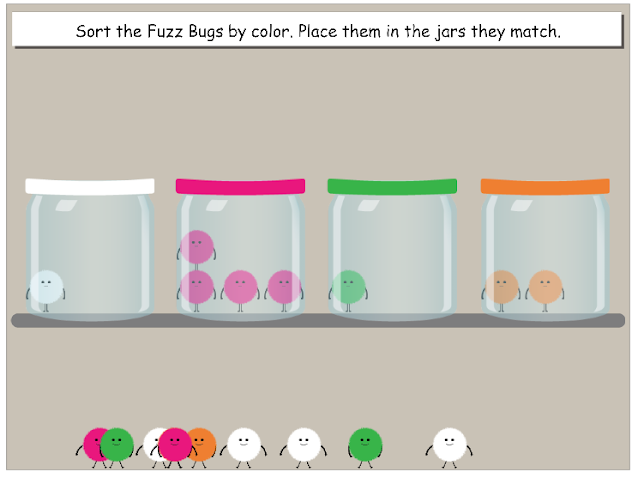
Matching games are a great way for children to develop visual recognition skills. They learn to recognize patterns and objects, and also improve their pre-reading and language skills. They will be able to use more words and build a wider vocabulary as they play more matching games.
Memory games
Memory games are great for children. These games can be fun and easy to play. The game's core concept is simple. One player begins by saying any number one through nine. Then, the next player must follow the same pattern and add one. These games will help children learn numbers and improve their focus and concentration.

Matching games
Children can develop their visual skills by playing matching games. They encourage children to be more focused on visual details, and sharpen their memory. These games can be personalized with photos of your family or words to make them more memorable.
Collaboration games
Children can learn and develop by playing cooperative games. When children work together to solve puzzles, they develop communication skills as well as quick-thinking skills. They also improve their gross motor abilities.
Adapted Games
101 Adapted Games for Kids focuses primarily upon a collection games that are popular with children, but can still be used in a more inclusive way by making simple adaptations. The book includes tips, hints, and examples of basic adaptations.
Enjoy creative games
To keep your toddler interested and entertained, you can use creative matching games. These can be made from craft supplies or found items. You should ensure that the game follows a particular theme. Preschoolers can match letters and shapes, or objects. For older children, you can match household tools and food.

Free games
Both kids and adults can enjoy free matching games. These games are simple to download and can be played on many devices. These colorful pieces are difficult to match with each other because they move around corners.
FAQ
What is the difference in a university and college?
A university is an academic institution that provides higher education. It offers both undergraduate and graduate courses in many fields.
A college is usually smaller than a university and has a lower reputation. It may offer fewer courses but often has its own specialist departments.
How long does a teacher of early childhood take?
The four-year process to earn a bachelor's level in early child education takes. It will take you two years to complete the required general education courses at most universities.
After finishing your undergraduate degree, you'll usually be accepted into graduate school. This step allows for you to specialize in one area of study.
For example, you might choose to concentrate on learning disabilities or child psychology. After earning a master's, you must apply to a teacher preparation program.
This process can take many years. This is a time when you will learn real-world skills from experienced educators.
Finally, before you can begin teaching, you need to pass the state exams.
This process is lengthy and you will not be able instantly to enter the workforce.
What do you need to become a teacher in early childhood?
It is important to decide whether you want to enter early childhood education. If so, then you will need to get your bachelor's degree. Some states require that students earn a master’s degree.
You'll likely have to take classes during the summer. These courses include topics like pedagogy (the art and science of teaching) or curriculum development.
Many colleges offer associate programs that lead to teaching certifications.
While some schools offer certificates or bachelor's degrees in early childhood education, others only offer diplomas.
You may not require additional training if you are planning to teach at your own home.
Who can homeschool?
Anyone can homeschool. There are no required qualifications.
Children can be taught by parents who have graduated high school. Many parents opt to teach their older children at college.
Parents who have received less formal education can still teach their children.
After completing certain requirements, parents can become teachers certified. These requirements are different for each state.
Some states require all homeschooled students to complete a test before graduation. Others do not.
Homeschooling parents need to register their family with local schools.
This process involves filling out paperwork and submitting it to the school board.
After registering, parents will be able to enroll their child in either public or privately-funded schools.
A few states allow parents who are not registered with the government to homeschool their children.
If you live in one of these states, you will be responsible for ensuring your children meet the requirements of the state's compulsory attendance law.
Do you have to go to college in order become an early education teacher?
However, you may want to think about going to college in order to be prepared for a career in the field.
It's important to note that becoming a teacher isn't easy. Each year, many applicants are rejected from programs. A lot of people leave college after just one semester.
To become a teacher, you must also meet certain qualifications.
What is the purpose or education of schooling?
Education should be able to help students acquire the skills needed for employment. It is not just an academic pursuit but also a social activity where children learn from each other and gain confidence by participating in activities such as sports, music, and art. It is all about teaching students how to think critically, and how to create so they can be independent and self-reliant. What does it really mean to have high educational standards
Education standards that ensure all students reach their full potential are good. They establish clear goals for teachers to work towards with their students. Good educational standards are flexible enough to enable schools to meet changing needs. Equal opportunity for all children, regardless of background, must be provided.
What amount of money can a teacher earn in early education? (earning potential)
Teachers in early childhood make an average of $45,000 annually.
However, there are areas where salaries tend to be higher than average. Teachers who teach in large urban areas typically earn more than teachers working in rural schools.
Salaries depend also on factors like the size of a district and whether a teacher has a master’s or doctorate.
Teachers are often paid less than other college graduates, simply because they have little experience. Their wages can rise over time though.
Statistics
- Think of the rhetorical power of nineteenth-century abolitionist Harriet Beecher Stowe, Martin Luther King, Jr., or Occupy Wall Street activists with their rallying cry of “we are the 99 percent.” (bostonreview.net)
- These institutions can vary according to different contexts.[83] (en.wikipedia.org)
- In most developed countries, a high proportion of the population (up to 50%) now enters higher education at some time in their lives. (en.wikipedia.org)
- Globally, in 2008, around 89% of children aged six to twelve were enrolled in primary education, and this proportion was rising. (en.wikipedia.org)
- “Children of homeowners are 116% more likely to graduate from college than children of renters of the same age, race, and income. (habitatbroward.org)
External Links
How To
What is vocational education?
Vocational education prepares students for the workforce after high school. Students are trained in specific skills to be able to do a particular job such as welding. It includes training on the job in apprenticeship programs. Vocational education differs from general education because it focuses on preparing individuals for specific careers rather than learning broad knowledge for future use. Vocational education's goal is to help students find employment after they graduate.
Vocational education could be offered at all levels, including primary schools, secondary school, colleges and universities, technical schools, trade schools as well community colleges, junior college, and four-year schools. There are also many specialty schools like nursing schools and law schools, legal schools, medical schools and dental schools as well as veterinary medicine, veterinary medicine, firefighting, police academies and military academies. Many of these offer both academic instruction, and practical experience.
In recent decades, many countries have made large investments in vocational training. It is still controversial whether vocational education is effective. Some argue it doesn't improve students' employability, while others argue it prepares them for the future.
The U.S. Bureau of Labor Statistics has estimated that 47% of American adults hold a postsecondary certificate or degree related to their current occupation. This figure is higher for those with more education. 71% (25-29) of Americans have a bachelor's level or higher and work in fields that require a postsecondary degree.
The BLS reported in 2012 that almost half of all adults had some type of postsecondary credential. A third of Americans have a two-year associate's degree and 10% hold a four year bachelor's degree. One fifth of Americans have a master's, or doctorate.
The median annual salary for people with a bachelor's was $50,000. This compares to $23,800 for those who don't have a degree. For those with advanced degrees, the median wage was $81,300.
The median income for those who have not completed high school was just $15,200. A person with a lower high school diploma earned $13,000 annually.